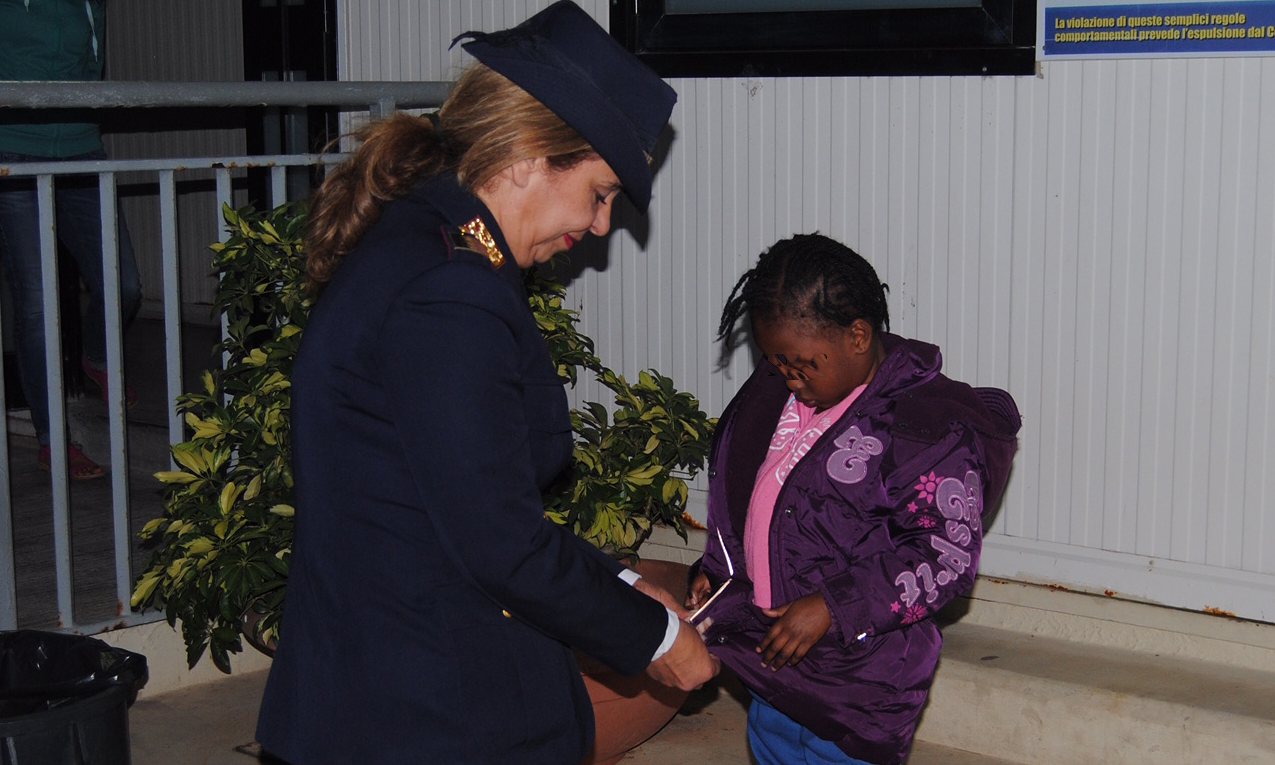Oumoh, one of 15 asylum seekers rescued from Mediterranean in November, was recognised by a fellow refugee who saw a photo on police officer’s phone
November 25, 2016:Â When Oumoh, four, arrived on the Italian island of Lampedusa earlier this month, no one could work out how she had reached there. Where was she from? Who and where were her parents? The authorities were mystified.
Oumoh was one of a group of 15 asylum seekers rescued from the southern Mediterranean at the start of November. But none of the other 14 seemed to know her.
Police took photographs of Oumoh before she was taken to Sicily, where the charity Save The Children helped find her safe lodging at a centre in Palermo. And so things remained until a bizarre coincidence a fortnight later, according to the news agency, Agence France-Presse. A police officer on Lampedusa gave their phone to another young refugee, an eight-year-old from Ivory Coast called Nassade. Flicking through the officer’s photo album, Nassade suddenly settled on a picture of Oumoh, taken at the start of November.
“It’s Oumoh, it’s Oumoh!†Nassade shouted. The mysterious four-year-old had been identified.
Nassade’s family, it turned out, had met Oumoh and her mother in Tunisia. The pair had fled Ivory Coast, west Africa, to avoid Oumoh being subjected to female genital mutilation by her father’s family. They reached Tunisia safely, at which point Oumoh was entrusted to a friend, while her mother returned to Ivory Coastto collect some belongings.
But the plan fell apart when the friend Oumoh had been left with had the chance to be smuggled to Italy, said Maria Volpe, an Italian police inspector who has been working with child migrants for 20 years. “She didn’t want to leave the little girl with someone else in Tunisia,†Volpe told the Guardian by phone. “She tried to get in touch with the mother, with no luck. So she decided to bring the little girl with her.â€
Happily, however, Nassade’s mother still had Oumoh’s mum’s phone number. Volpe was able to reach her, and mother and daughter are now expected to be reunited in Sicily by Christmas.
Volpe added: “The mum is now really, really, happy that her little girl is well. She was crying on the phone. We told her that the little girl is safe and we are trying to arrange everything so that the mother can hug her daughter again.â€
As extraordinary as Oumoh’s experiences were, they are not unique, child advocates said. Around 16% of the 170,000 arrivals to Italy this year have been children – and around 90% of those were unaccompanied. For this reason Save The Children has representatives waiting at each migrant landing, to identify and protect any new unaccompanied child.
“There are cases like this that have cropped up in the past,†said Gemma Parkin, a spokesperson for Save The Children.
A day prior to Oumoh’s rescue, Save The Children’s own rescue boat, which operates off the coast of Libya, picked up two Ivorian toddlers whose mother had drowned in a shipwreck.
Among the most dramatic cases was that of a one-year-old Syrian girl, who arrived in Italy without her family in 2014. Her parents had also drowned in a shipwreck, and Hayat only survived because a Syrian doctor happened to spot her – and held her above his head as he trod water. She turned two after reaching Sicily and was later joined by her grandfather, who then took her back to Sudan, where her family had been living.
Other unaccompanied children have had even less luck after arriving in Italy. Under-18s are meant to be taken to special centres and provided with full education and language-learning – but in reality many still fall through the cracks in the system. Without proper funding, the Italian social services struggle to provide proper support to underage migrants, and as a result many grow bored and escape.
Two unaccompanied children, interviewed by the Guardian earlier this year in Sicily, said they felt they had been tacitly encouraged to leave a reception facility in Sicily.
“There twenty or so children with us who escaped,†says Elias, a 15-year-old Eritrean travelling with a 14-year-old friend, unaccompanied by any adults. “We told the officials but they didn’t do anything, so we realised it was something normal to leave. They gave us papers with our names on them, and said we could go outside. It was like an invitation to leave.â€
At the time of their interview, the pair were sleeping on a mattress in a Sicilian car park – an all too common occurrence that leaves them vulnerable to traffickers and sexual predators, campaigners say.
“That’s when they end up getting trafficked for sex work and exploitation,†said Gemma Parkin from Save The Children. “The smugglers promise them jobs as hairdressers, in the back of a pizza shop, as car washers, earning one or two euros a day. But they often end up working in even more exploitative situations.â€
Some are forced into prostitution, after being told by traffickers that they must work in the sex industry to pay off their travel costs from countries like Nigeria. “It’s hugely complex,†said Parkin, whose charity tries to help people escape this cycle of exploitation. “We have to tell them that if they don’t pay off their debts to the [brothel] madam, it won’t result in their family back home getting cursed.â€
Another boatload of rescued migrants is expected to arrive in Sicily on Friday morning – a quarter of them children. “And yet children are consistently overlooked in Europe’s response-planning,†said Parkin. “It’s outrageous.â€







